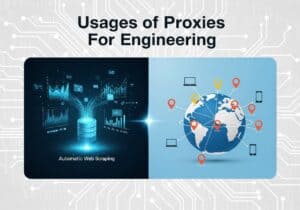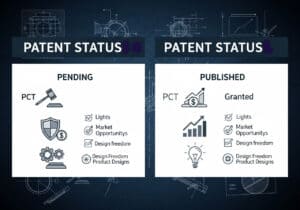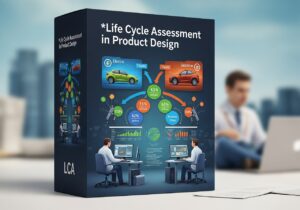Et si savoir comment vieillissent les panneaux solaires vous permettait de maximiser votre investissement ? Leur efficacité est cruciale pour le rendement et la rentabilité d'un système d'énergie solaire. Pourtant, de nombreux facteurs les font vieillir, ce qui a un impact sur leur valeur et leur efficacité à long terme.
Différents éléments, tels que les conditions environnementales, les améliorations technologiques et la manière dont ils sont installés, ont une incidence sur leur efficacité. durée de vie. Connaître ces éléments permet de faire des choix judicieux. Les modules solaires, tels que les modules monocristallins et polycristallins, ont des taux différents de transformation de la lumière du soleil en énergie. Pour tirer le meilleur parti des panneaux solaires, il faut donc les entretenir en permanence et adopter les nouvelles technologies.
A Retenir
- Les conditions environnementales jouent un rôle crucial dans la rapidité de la dégradation des panneaux solaires.
- Les températures élevées peuvent réduire l'efficacité d'un panneau en altérant les propriétés de ses semi-conducteurs.
- L'orientation optimale des panneaux, en particulier vers le sud, permet de mieux capter l'énergie solaire.
- Un entretien régulier, comprenant le nettoyage et la surveillance, est essentiel pour maintenir l'efficacité du panneau au fil des ans.
- Les progrès technologiques continuent d'améliorer l'efficacité et la durée de vie des panneaux solaires.
Introduction à la dégradation des panneaux solaires
Les panneaux solaires perdent lentement leur capacité à créer de l'électricité à partir de la lumière du soleil. Ce processus est appelé dégradation des panneaux solaires. Elle peut avoir un impact considérable sur les bénéfices des grands projets d'énergie solaire. Des millions pourraient être perdus en paiements de performance. Il est donc essentiel de comprendre comment cela se produit. Cette connaissance permet de prolonger la durée de vie et les finances des systèmes solaires.
Les facteurs environnementaux jouent un rôle important dans la réduction de l'efficacité des panneaux solaires. Des études menées dans les déserts et sous les tropiques révèlent des taux de dégradation annuels compris entre 1,2% et 1,8%. Toutefois, le taux moyen devrait être d'environ 0,5% par an en 2020. Cela signifie qu'au bout de 20 ans, la production d'électricité pourrait chuter de 10%. Les nouveaux panneaux à haut rendement peuvent perdre de l'efficacité plus rapidement, jusqu'à 2% par an. Cela conduit à une diminution de la puissance de 40% sur 20 ans.
Une mauvaise installation et des contraintes mécaniques peuvent aggraver la situation. Elles peuvent provoquer des fissures, des "traînées d'escargot" et des salissures sur les panneaux. Les vents violents peuvent également nuire à l'efficacité et à la résistance des panneaux. Tous ces facteurs contribuent à une dégradation plus rapide.
Les panneaux sont garantis 25 à 30 ans, mais ils se dégradent généralement à raison de 1% par an. Cela affecte la quantité d'électricité qu'ils peuvent produire. La puissance chute jusqu'à 10% au cours du premier mois en raison de la dégradation induite par la lumière (LID). La dégradation induite par le potentiel (PID) peut réduire les performances de 20% dès le début si elle est ignorée.
Malgré ces obstacles, l'énergie solaire est devenue plus abordable. Au cours des dix dernières années, le coût de la production d'électricité à partir de l'énergie solaire a baissé de 14%. Cela est dû à la baisse du prix des panneaux solaires. L'énergie solaire est désormais un acteur clé de l'énergie d'entreprise. Entre 2017 et 2022, plus de 142 gigawatts ont été acquis par les entreprises dans le domaine de l'énergie solaire. L'Amérique du Nord a réalisé la moitié de ces contrats, ce qui témoigne d'une forte tendance en faveur de l'énergie solaire.
Il est important que les parties prenantes comprennent et corrigent les faiblesses des systèmes photovoltaïques. Il s'agit notamment des problèmes liés aux onduleurs, aux interrupteurs, etc. Il est essentiel de détecter les problèmes dès le début de la conception, de l'installation ou après. Cela permet aux panneaux solaires de fonctionner plus longtemps.
Les meilleurs panneaux solaires ont un taux de dégradation plus faible, de l'ordre de 0,4% par an. Cela signifie une baisse de puissance d'environ 12-15% sur 25-30 ans. La baisse initiale due au BO-LID est de 2-3%. Mais ensuite, ces panneaux se dégradent plus lentement, entre 0,3% et 0,5% par an.
Le tableau ci-dessous montre l'impact de la dégradation sur différents types de panneaux solaires au fil du temps :
| Type de dégradation | Impact initial | Impact à long terme | Taux de dégradation médian |
|---|---|---|---|
| LID (Light Induced Degradation - Dégradation induite par la lumière) | Jusqu'à 10% le premier mois | Se stabilise avec un taux réduit | 0,5% par an |
| PID (dégradation potentielle induite) | Jusqu'à 20% dans les premiers mois | Perte de performance importante si le problème n'est pas résolu | 0,67% par an |
| Stabilisation BO-LID | 2-3% réduction initiale | Réduction à 0,3%-0,5% par an | – |
| Modules photovoltaïques à haut rendement | Jusqu'à 2% par an au départ | 40% réduction sur 20 ans | 1%-2% par an |
| Panneaux solaires de première qualité | 0,4% par an | 12-15% sur 25-30 ans | 0,4% par an |
Facteurs environnementaux influant sur la durée de vie des panneaux solaires
La durée de vie et l'efficacité des panneaux solaires sont fortement influencées par l'environnement. La connaissance de ces facteurs nous aide à faire des choix plus judicieux en matière de garantie des panneaux solaires et à tirer le meilleur parti de cette technologie.
Conditions climatiques et environnementales
L'endroit où vous installez les panneaux solaires a une grande importance pour leur efficacité. durée de vie des panneaux solaires. Les températures élevées peuvent endommager les cellules solaires à l'intérieur, ce qui réduit la puissance. En revanche, les endroits plus frais permettent aux panneaux solaires de mieux fonctionner.
L'ombrage causé par les arbres, les bâtiments ou d'autres éléments peut également réduire l'efficacité des panneaux solaires. Même si de nombreux fabricants de panneaux solaires promettent des garanties de 25 ans ou plus, ces facteurs environnementaux font qu'il est nécessaire de réfléchir attentivement aux garanties.
Conditions de la zone côtière
L'installation de panneaux solaires dans les zones côtières pose des problèmes supplémentaires en raison de la salinité de l'air. Cette salinité accélère la rouille, en particulier sur les pièces métalliques, et raccourcit la durée de vie des panneaux solaires. durée de vie des panneaux solaires. Choisir entretien régulier et les pièces qui résistent à la rouille peuvent être utiles, mais il est important de prendre en compte les garanties spéciales dans ces domaines.
Les changements de saison, les vents forts et la pleine lumière du soleil influencent également la vitesse d'usure des panneaux solaires. Normalement, les panneaux solaires perdent environ 0,5% de leur performance chaque année. Les meilleurs panneaux perdent moins, environ 0,3% par an.
| État de l'environnement | Effet sur la durée de vie des panneaux solaires | Taux de dégradation |
|---|---|---|
| Températures élevées | Efficacité réduite | Jusqu'à 0,5% par an |
| Ombrage d'objets | Perte d'efficacité significative | N/A |
| Conditions côtières | Corrosion accélérée | Moyenne 0,5% par an |
| Climats frais | Efficacité accrue | Dégradation moindre |
Impacts de la température sur les panneaux solaires
La température influence grandement le rendement des panneaux solaires. Elle affecte même leur durée de vie. Connaître cette donnée permet d'optimiser l'installation des systèmes solaires. Cela permet de réduire les pertes et de prolonger leur durée de vie.
Coefficient de température
Le coefficient de température est essentiel pour comprendre ces impacts. En général, les panneaux solaires sont moins efficaces lorsqu'il fait plus chaud. Pour chaque degré Celsius au-dessus de 25°C, leur efficacité diminue de 0,3% à 0,5%.. Ainsi, si la température augmente de 1°C au-dessus de 25°C, un panneau ayant une valeur de -0,3%/°C perd 0,3% d'efficacité.
- L'efficacité des panneaux solaires grand public varie entre 15% et 23%.
- Les panneaux solaires EcoFlow sont parmi les meilleurs, avec un taux d'efficacité de 23%.
- Les panneaux polycristallins se situent au bas de l'échelle, avec un rendement d'environ 15%.
Dans des conditions de laboratoire, les panneaux solaires ont atteint un rendement de plus de 40%. Mais dans le monde réel...
Vous avez lu 31% de l'article. Le reste est destiné à notre communauté. Vous êtes déjà membre ? Se connecter
(et aussi pour protéger notre contenu original contre les robots d'indexation)
Communauté mondiale de l'innovation
Se connecter ou s'inscrire (100% gratuit)
Voir la suite de cet article et tous les contenus et outils réservés aux membres.
Uniquement de vrais ingénieurs, fabricants, concepteurs et professionnels du marketing.
Pas de bot, pas de hater, pas de spammer.
Lectures et méthodologies connexes
- Gestion du cycle de vie : Techniques visant à prolonger la durée de vie des produits par une maintenance et des mises à jour proactives.
- Analyse de la dégradation des matériaux : Méthodes d'évaluation de la détérioration de différents matériaux au fil du temps et dans diverses conditions.
- Impact environnemental sur les produits : Étude de la manière dont les facteurs environnementaux tels que l'humidité, la température et l'exposition aux UV affectent la longévité des produits.
- Maintenance prédictive : Utilisation de l'analyse des données pour prévoir quand un produit aura besoin d'être entretenu avant qu'il ne tombe en panne.
- Comportement des consommateurs et durée de vie des produits : Analyse de la manière dont les modes d'utilisation des consommateurs influencent le vieillissement et la durée de vie des produits.
- Techniques de recyclage et d'upcycling : Méthodes de réutilisation des produits anciens pour prolonger leur durée de vie ou les transformer en nouveaux produits.
FAQ
Quels sont les principaux facteurs influençant le vieillissement des panneaux solaires ?
La longévité et l'efficacité des panneaux solaires dépendent de plusieurs facteurs. Il s'agit notamment du climat, de la qualité de l'installation et de l'entretien. Les progrès technologiques jouent également un rôle.
Comment la dégradation des panneaux solaires affecte-t-elle les performances ?
Au fil du temps, les panneaux solaires perdent peu à peu leur capacité à convertir la lumière du soleil en électricité. L'impact sur l'environnement, l'usure des matériaux et la diminution de l'efficacité en sont les principales raisons.
Quels sont les facteurs environnementaux qui influencent la durée de vie des panneaux solaires ?
L'emplacement, les fluctuations de température et la proximité de la mer ont leur importance. Par exemple, les températures élevées peuvent affaiblir les panneaux solaires. L'air salé à proximité de l'océan peut également causer des dommages.
Comment la température affecte-t-elle l'efficacité des panneaux solaires ?
Les panneaux solaires perdent de leur efficacité à mesure qu'ils chauffent. Cela est dû à un principe appelé coefficient de température. Dans les endroits chauds, cette réduction de l'efficacité est plus visible.
Quelle est l'orientation optimale des panneaux solaires ?
Les panneaux solaires fonctionnent mieux lorsqu'ils sont orientés vers le sud. C'est cette position qui reçoit le plus de lumière du soleil tout au long de l'année. Elle est essentielle pour obtenir de bonnes performances.
Quel est l'impact de l'angle d'inclinaison des panneaux solaires sur leur performance ?
L'angle de vos panneaux solaires doit correspondre à la latitude de votre lieu de résidence. Cela permet de maximiser la captation de la lumière du soleil. Un réglage correct de l'inclinaison permet d'augmenter la production d'énergie.
Quelle est la différence entre les cellules solaires monocristallines et polycristallines ?
Les cellules monocristallines sont plus efficaces et durent plus longtemps. Cela s'explique par le fait qu'elles sont fabriquées à partir de silicium plus pur. Les cellules polycristallines sont moins chères mais moins performantes.
Quelles sont les technologies de pointe qui améliorent l'efficacité des panneaux solaires ?
Les nouvelles technologies telles que les revêtements antireflets et le MPPT augmentent la quantité d'énergie convertie par les panneaux. Elles permettent de capter plus de lumière et de réduire les pertes.
Comment les déséquilibres de tension et de courant affectent-ils les panneaux solaires ?
Les déséquilibres de tension et de courant peuvent endommager les cellules solaires. L'utilisation de composants de qualité et d'un câblage correct permet d'éviter cela. Les panneaux fonctionnent ainsi mieux et plus longtemps.
Quels sont les effets de l'ombrage partiel sur les panneaux solaires ?
L'ombrage d'un seul panneau peut réduire la puissance de l'ensemble du groupe. Un peu d'ombre a donc un effet important.
Quelle est l'importance de la gestion des débris pour l'entretien des panneaux solaires ?
Il est essentiel que les panneaux soient exempts de saletés et de débris. Des panneaux propres convertissent plus efficacement la lumière du soleil en électricité. Cela permet d'éviter les pertes d'efficacité.
Pourquoi un nettoyage de routine est-il nécessaire pour les panneaux solaires ?
Le nettoyage régulier des panneaux leur permet d'absorber la lumière du soleil sans la bloquer. Cela permet de maintenir leur efficacité à un niveau élevé. Ils durent également plus longtemps.
Quels sont les avantages des systèmes de surveillance avancés pour la maintenance des panneaux solaires ?
Les systèmes de surveillance permettent de suivre le fonctionnement des panneaux en temps réel. Ils permettent de détecter les problèmes à un stade précoce. Les réparations peuvent donc être effectuées rapidement, ce qui prolonge la durée de vie des panneaux.
Quels sont les principaux avantages de la compréhension des facteurs de vieillissement des panneaux solaires ?
Savoir ce qui réduit la durée de vie d'un panneau permet d'en assurer le bon fonctionnement. Cela garantit un bon retour sur investissement. Cela permet également de soutenir l'énergie propre.











Excellent article ! J'ajouterais que si le nettoyage et l'entretien réguliers sont essentiels pour une performance optimale des panneaux solaires, le choix du bon emplacement et du bon angle lors de l'installation peut réduire considérablement les besoins d'entretien et améliorer l'efficacité.
mettre l'accent sur le rôle des technologies émergentes, telles que les panneaux bifaciaux et les cellules solaires en pérovskite, qui s'avèrent prometteuses pour réduire les taux de dégradation.
Qu'en est-il des revêtements anticorrosion ?
Une lecture intéressante, mais l'impact de la poussière et de la pollution sur l'efficacité des panneaux solaires n'est-il pas également un facteur clé de dégradation ?
Articles Similaires
Validation de Processus IQ OQ PQ : Théorie et Pratique Complètes
Les stratégies du « Fou Solitaire », du « First Follower » et du « Fast Follower »
Les 20 Meilleures Utilisations de Proxies pour l'Ingénierie
Comment Vendre de la Glace aux Esquimaux (ou Manigances Marketing)
Greenwashing : les 15 meilleurs conseils d'un gentleman pour une tromperie exquise
Comment lutter au mieux contre un brevet en instance